Did a group of hunters go in search of food more than 10,000 years ago? Fossilized footprints found in East Africa offer a rare snapshot of life at the end of the Upper Pleistocene.
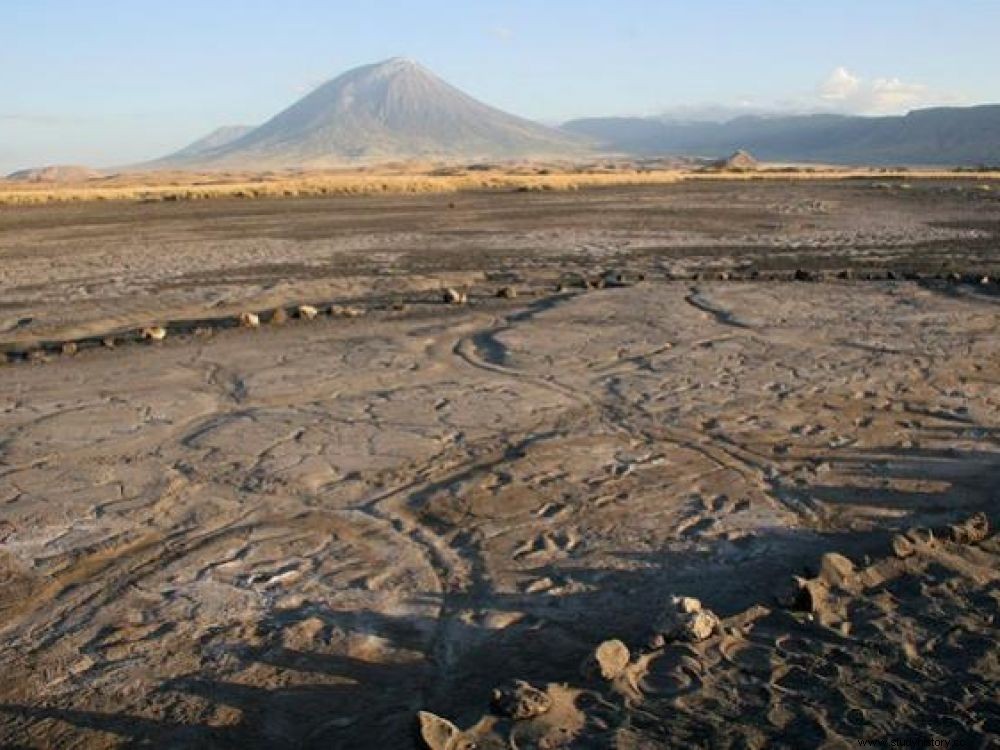
The Engare Sero footprint site in Tanzania. In the background, the Ol Doinyo Lengaï volcano.
It is in a lunar and monochrome landscape, where only the perfect cone of the Ol Doinyo Lengaï volcano rises up against a background of misty sky, that 408 fossilized human footprints were discovered at Engare Sero, south of Lake Natron, in the north of the Tanzania. This collection of footprints, the most abundant ever encountered to date on the African continent, lined ancient volcanic mudslides, on which protective layers of sediment had been deposited over the millennia. In an article published in the journal Scientific Reports , under the direction of bioarchaeologist Kevin Hatal of the University of Chatham, in Pittsburgh (United States), a team of scientists detail the conditions in which these footprints found themselves sealed in the ashes projected by the neighboring volcano, there is about 10,000 to 12,000 years ago. Traces spotted for the first time in 2008 by members of a community of nomadic Maasai herders.
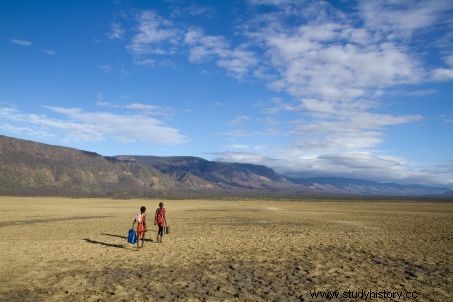 Masai children walking along the shores of Lake Natron, Tanzania. ©Michel and Christine Denis-Huot /Biosphoto/AFP
Masai children walking along the shores of Lake Natron, Tanzania. ©Michel and Christine Denis-Huot /Biosphoto/AFP
A boon for the study of prehistoric groups
By analyzing the size of these bare foot prints — with the toes clearly distinguishable — their orientation, stride lengths between steps, and then comparing them with fresh tracks left by modern feet, this study suggests that these prints belonged to to a mixed group of 17 individuals consisting of 14 women, two men and a young child, moving together in a southwesterly direction.
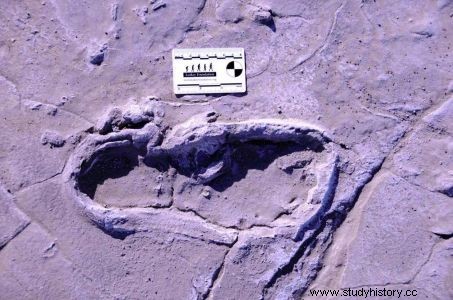 One of the human footprints found at the prehistoric site of Engare Sero, Tanzania.©William Harcourt -Smith
One of the human footprints found at the prehistoric site of Engare Sero, Tanzania.©William Harcourt -Smith
Several other tracks have been identified in parallel with populations walking in opposite directions. Thus, six other series of footprints belonging rather to isolated individuals going towards the northeast. All circulating at varying walking speeds.
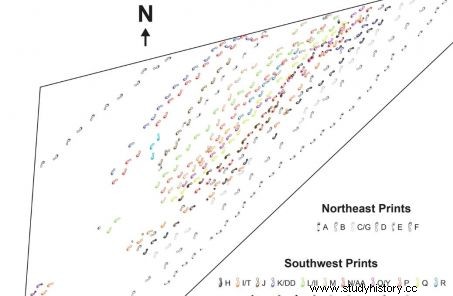 Map showing the series of footprints preserved at Engare Sero. Different tracks and steps are associated by colors. ©Kevin Hatal et alii.
Map showing the series of footprints preserved at Engare Sero. Different tracks and steps are associated by colors. ©Kevin Hatal et alii.
The data concerning the speed and the stature of the individuals could be obtained thanks to statistical comparisons made from a sample of 3233 individuals (1562 men and 1581 women aged 2 to 52 years). Anthropometric studies showing foot size and growth curves according to sex. "Distinctions sometimes difficult to make, with probability calculations showing small discrepancies in some cases, such as the series of fingerprints attributed to a teenager rather than a young girl “, explains Kevin Hatal joined by Sciences et Avenir .
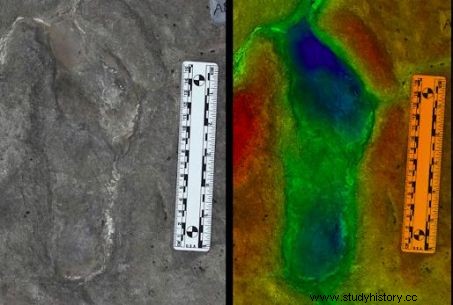 Photo of footprints (left) and 3D (right), colored by step depth . ©Kevin Hatal et alii.
Photo of footprints (left) and 3D (right), colored by step depth . ©Kevin Hatal et alii.
"When we examined all of these data, we especially found that concerning the mixed group, which included 14 women, its composition was consistent with observations made even today among the last populations of hunter-gatherers, like the Hazdas, in the valley of the great rift, who when they go in search of food, always keep this same sexual division of labor , added Kevin Hatal. It was even fascinating to witness such a snapshot of life, between the compatibility offered by these fossil records and these cooperative strategies for the food quest!"
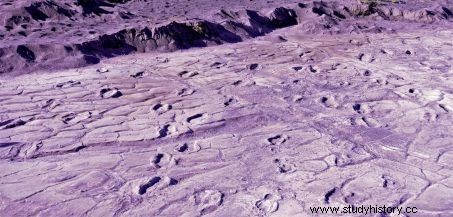 Footprints from the Late Late Pleistocene, Engare Sero, Tanzania. Credits:Will Harcourt-Smith
Footprints from the Late Late Pleistocene, Engare Sero, Tanzania. Credits:Will Harcourt-Smith
Until then, the oldest footprints known in Africa were those of hominids, 3.66 million years ago, at the site of Laetoli, also in Tanzania. It will now be necessary to count on Engare Seno, for the largest collection of human footprints on the African continent.
